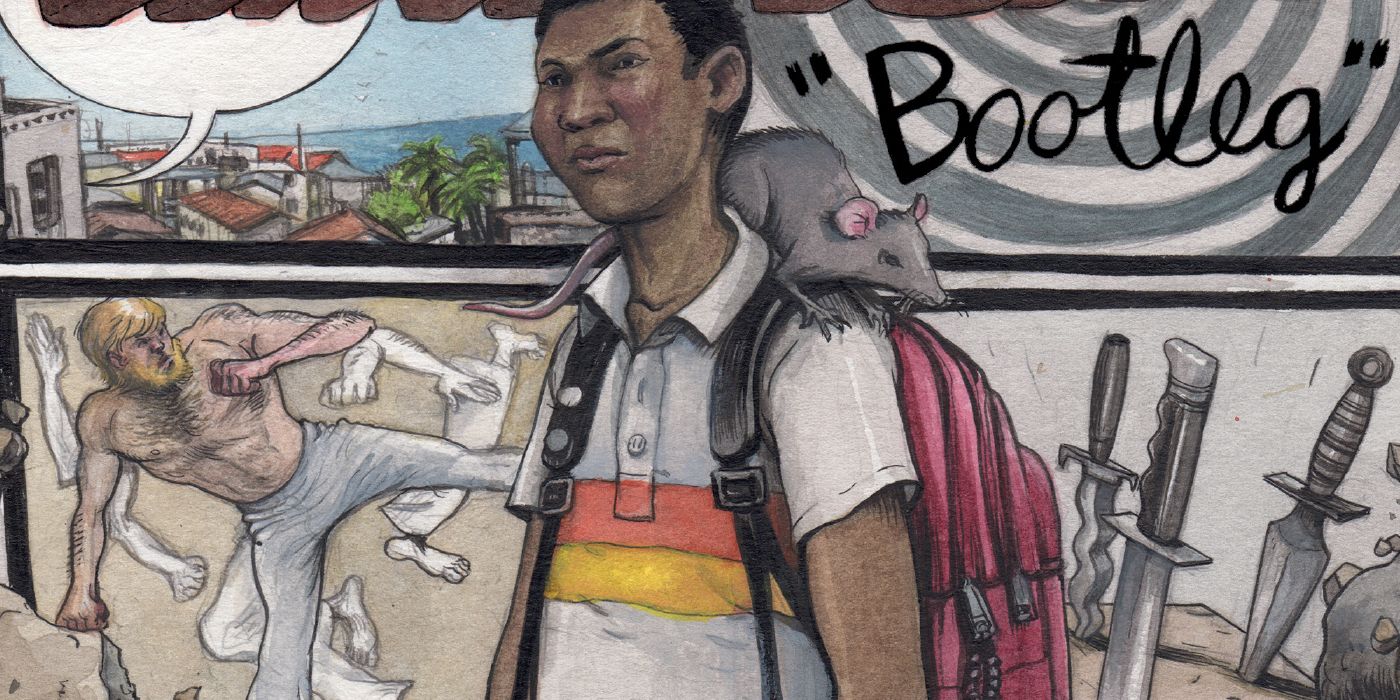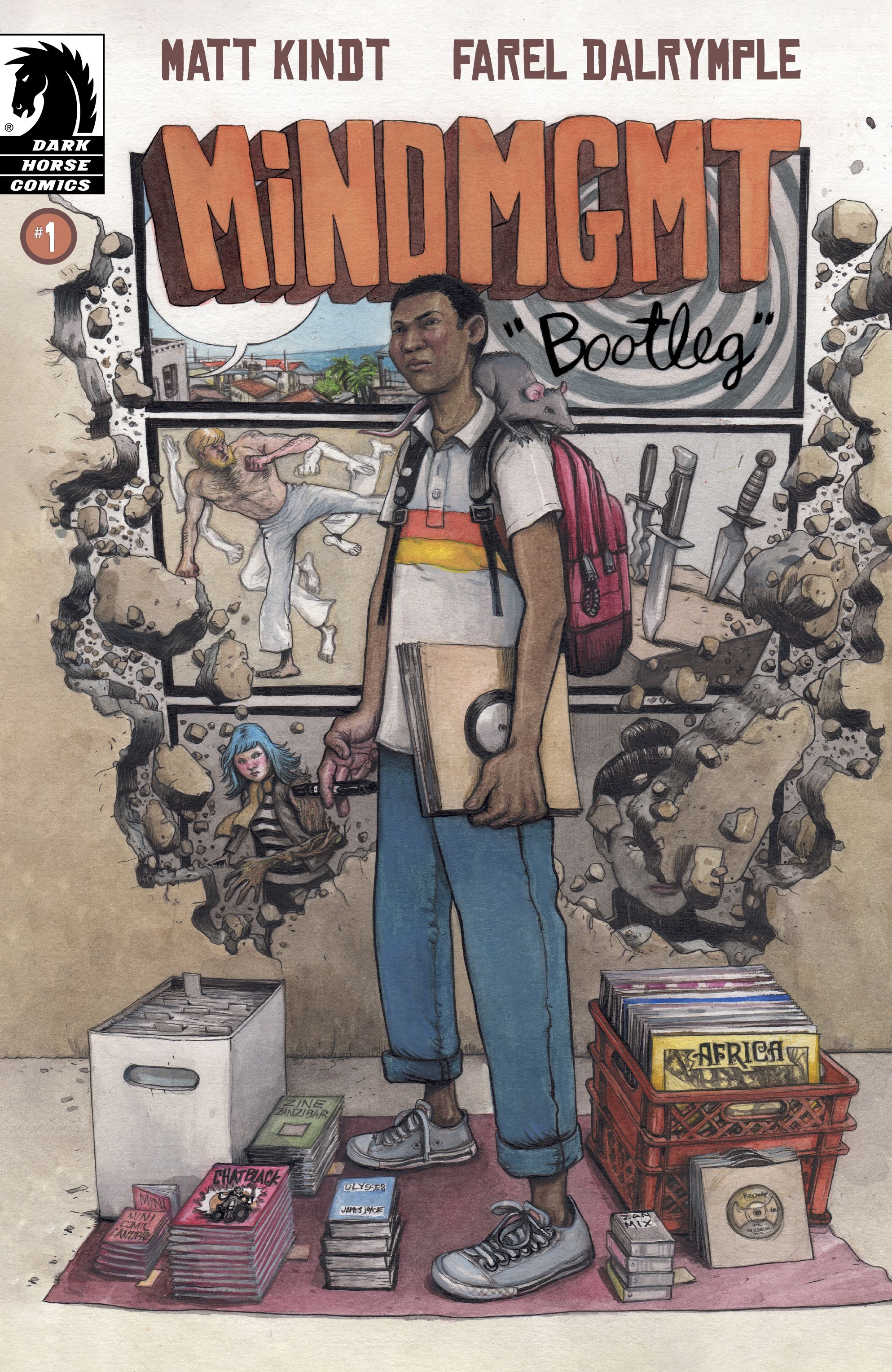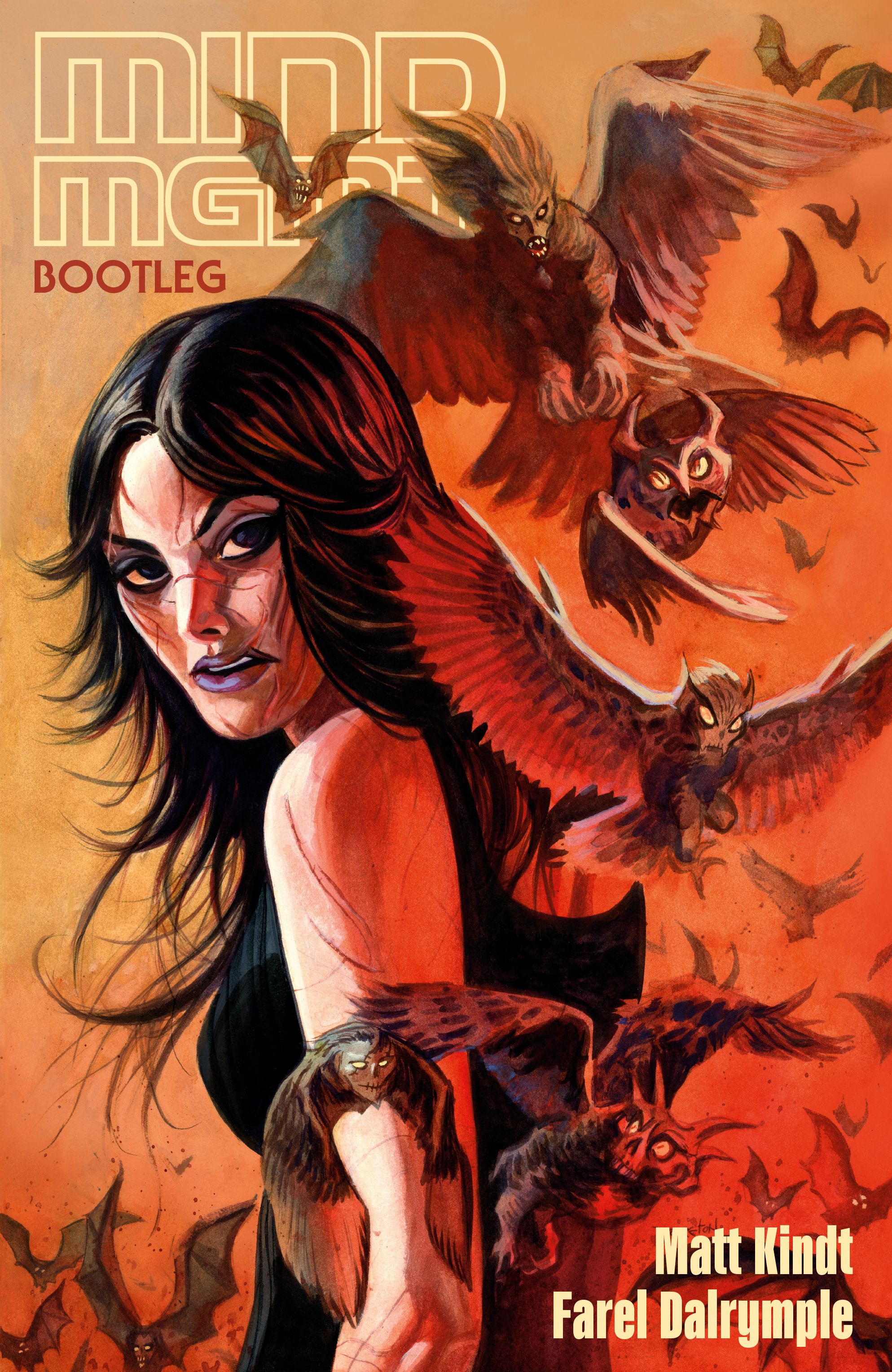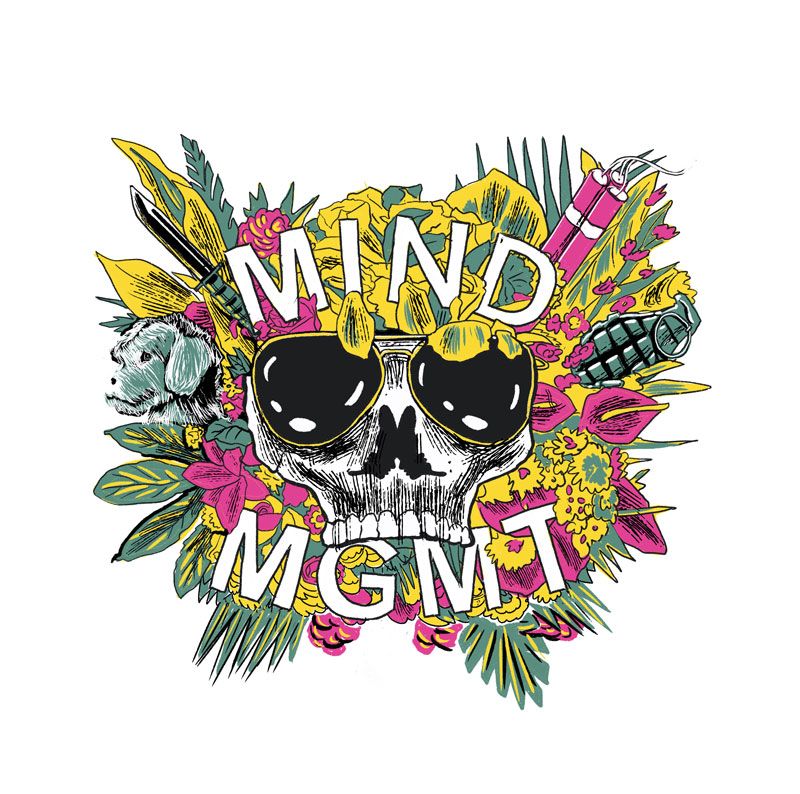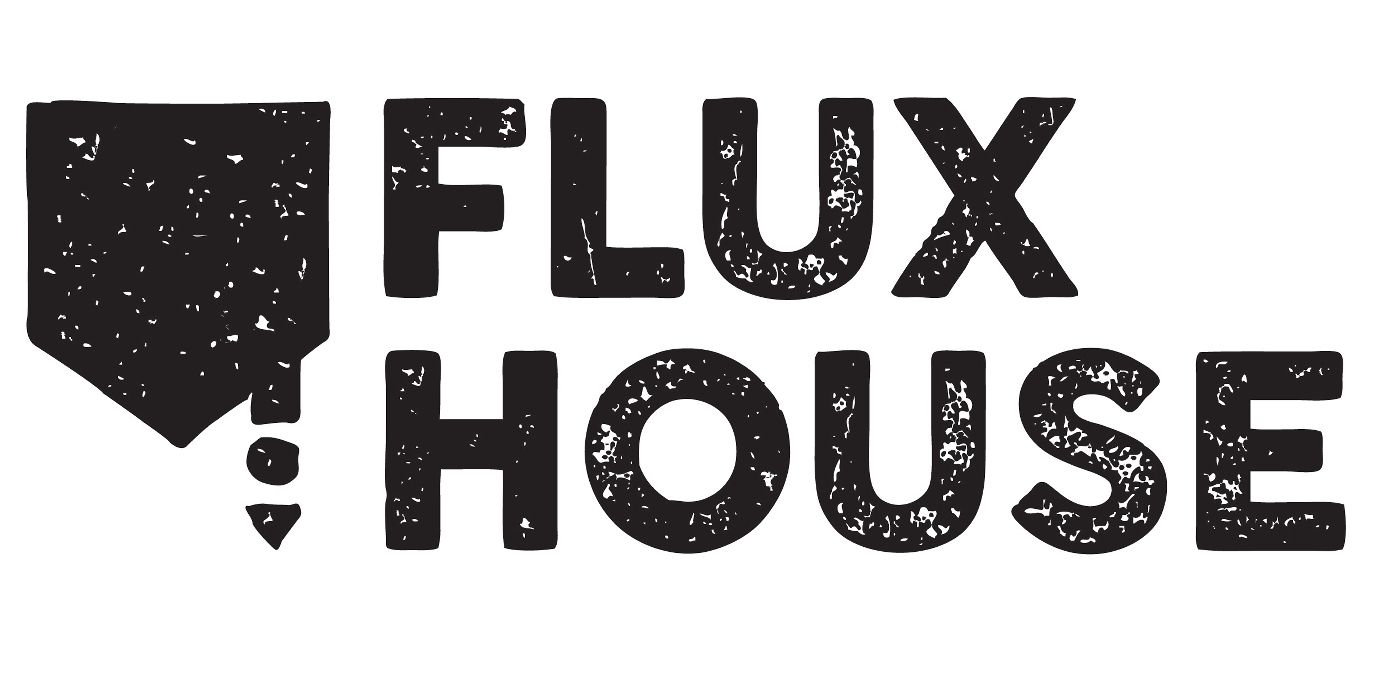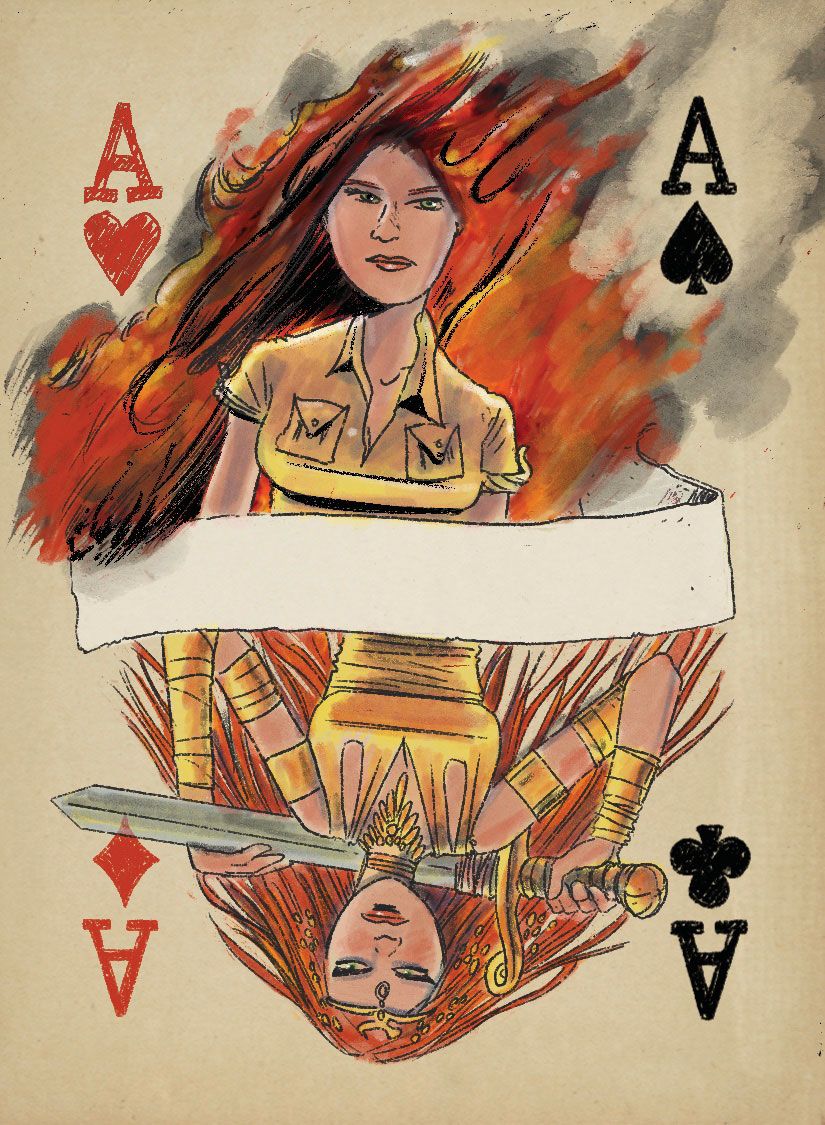Between his work with Keanu Reeves and Ron Garney on Boom! Studios' Brzrkr and Cosmic Detective, his upcoming graphic novel with Jeff Lemire and David Rubin, Matt Kindt keeps remarkably busy. But the prolific cartoonist seems determined to add even more to his plate. He just announced that he is launching Flux House -- a new, creator-owned imprint at Dark Horse Comics. Kindt will use the imprint to experiment with new book designs and explore the surreal side of the comics medium.
Flux House's first title, MIND MGMT: Bootleg will be released in July and will feature art from Farel Dalrymple, David Rubin, Matt Lesniewski and Jill Thompson. Kindt recently spoke with CBR to discuss his return to MIND MGMT and his plans for Flux House. He also mentioned some of the inspirations for the imprint and stressed his deep and abiding love for comics as an art form.
CBR: How did you begin collaborating with the artists you're working with on MIND MGMT: Bootleg?
Matt Kindt: The true beginning of each of these collaborations is me just being a fan of each of these artists. I met Farel [Dalyrmple] years ago at Emerald City Comic Con and bought some of his self-published mini-comics. I just love his use of paint and color and his linework. Nobody puts more care into each panel of a comic. Later, I asked him to do a variant cover for Ether which ended up looking like an amazing moody dark painting that could have easily stepped out of the Italian Renaissance. It’s hanging in my studio as we speak in a gold-gilded frame. It’s amazing.
Which brings me to David Rubin -- who at this point might be the artist I’ve collaborated with most with the sheer page count. We did Ether and Cosmic Detective (coming this summer) and he’s just a joy to work with. Again -- I was in Spain at a convention and ran across his book HERO and just loved the art style and energy and sense of humor in his art. He’s someone that has fun making comics and you can tell -- that joy shows up on every page. We had one of the most fun convention signings I’ve ever had -- when someone brought up a bottle of his favorite coffee-liqueur -- and he proceeded to pull out little plastic cups and serve shots of it to everyone that came up to the table to get an autograph and a sketch. EVERYONE had a great time.
Matt Lesniewski is one of those artists that broke onto the scene with an amazing first book, The Freak, published by Adhouse. I picked it up at Heroes Con a few years ago -- when I asked Chris Pitzer (Adhouse publisher) what was new and good that I should take a look at. He handed me The Freak. I put it in my stack, it made it home and sat on a shelf for months. I didn’t have time to read it. Later, Daniel Chabon (my editor at Dark Horse) suggested that maybe "other-Matt" would be a good collaborator. I was like, "wait a minute -- I know that name," picked up The Freak, read it and was blown away. And we ended up doing Crimson Flower together. He’s a great collaborator and still so young. But his work ethic is intense. Comics isn’t so much about talent and luck -- it’s about putting in the work. And I think that’s what I ended up bonding with him over. He’s one of those creators that you can tell is gonna be a “lifer” -- he loves comics. It’s all he’s gonna wanna do. He’s one of the best -- just waiting for the rest of the world to catch up to him and recognize it. He has a truly unique vision and talent that’s a crazy hybrid of Robert Crumb and Moebius. Nothing like him.
Finally – Jill Thompson. Not sure what to say other than I’ve been a fan of her since Sandman was coming out as monthly issues. After that was Scary Godmother. I really just respond to her use of paint and line -- very few of us use watercolor in comics (in the States) -- and I absolutely love it. Jill is one of those creators that it just becomes surreal working with -- like, who am I to be writing scripts for her? Definitely don’t feel worthy. There are a handful of creators that I have loved since before I was making comics professionally -- and at conventions, I’ll see them and be too shy to walk up and say hey. I’m getting better at it -- forcing myself to have those I’m-a-fan-of-you-conversations. Jill is one of those. I don’t get starstruck by anyone in other fields of work -- but in comics I definitely do. It’s the most amazing perk of working in comics -- not just talking to your heroes -- but working with them.
Will the new series pick up where you left off in MIND MGMT #35?
This series takes place a few years after. Each issue centers around one new character -- and it’s sort of a mystery what’s happened to Lyme, Meru, and the Eraser. Using four artists -- and me not drawing this -- needed to make story-sense. With MIND MGMT I wrote, penciled, inked, painted, lettered, and designed every single page – three years of monthly comics on my own – so breaking that streak needed to be for a reason. The main one -- I wanted to work with these amazing artists; the other -- each issue having its own visual language and version of reality made story sense for this one. There’s a reason that the art shifts -- and the styles are different. As usual, something crazy is going on in the world.
How has your approach to the MIND MGMT series changed heading into this new project?
I wrote scripts specifically for each artist. I had to include a lot more visual references as well. With MIND MGMT, a lot of the visual concepts are very…odd. It’s easy when I’m writing it -- I can picture it in my head -- I know what a phone made out of fur is supposed to look like -- but for another artist -- I had to explain a lot more than I usually do. And when I spell it out in scripts -- it ends up being kind of funny. I think there’s a little more humor in these four issues. It’s not “funny” -- but I definitely had fun putting the artists through the paces -- walking that line of what’s fun to draw -- and how far can we push things -- while making sure everyone had a good time.
What made MIND MGMT: Bootleg the perfect first title for your new imprint?
It’s my signature book in a way. Having a little time away from it -- and the number of reprints we’ve done -- it’s the one that people responded to most. And it’s the book that I’ve poured the most of myself into. EVERY crazy idea I’ve had ended up in the series. I structured it intentionally -- much like Sandman -- to be a framework where I could tell any story and get any idea across -- so it can grow and evolve with me as a person. It’s comics history as well -- it’s the longest ongoing monthly (color) series produced by only one person -- so I wanted to make it more of an event if I ever brought it back. I didn’t want to do sequels or spin-offs or cheapen that three-year run in any way. But with the ambition of Flux House -- I thought it was the book that made the most sense to launch this outside-the-box imprint.
Could you talk a little about the origins of Flux House?
I’ve always wanted total control of my books. From the beginning -- I’ve always designed the covers and done it all. As the years went by -- I wasn’t drawing everything so I gave up a little bit of control. Then I handed over design to someone else and eventually I’m just writing books and art-directing a bit but I was getting complacent. It felt easy in a way. Less work -- delegating tasks I used to do. And I didn’t want to do that. I wanna go back to my roots -- self-publishing -- but now I have a budget. I LOVE comics. And when I say I love them -- I mean…there’s nothing else I wanna work on as much as them. And the older I get – I see these comics coming out -- cheap paper -- self-cover and then a trade paperback that matches. It’s just…such a missed opportunity. You can do so much with design and different papers and covers and sizes. I want to shake things up. I wrote a little essay/mission statement before we launched to sell Dark Horse on my idea -- but it basically boiled down to this: If we’ve done it that way before? Then let’s do it a different way. That goes for everything -- PR, paper stock, design, size, format -- all of it. We’re going to have a fur-covered book. Magazine style formats. A deck of cards -- that functions as a graphic novel. It’s only going to get more inventive. The new MIND MGMT series is going to have polybagged variants with an…interesting design -- and each issue also includes a unique playing card -- that can be incorporated into any deck of playing cards -- includes all-new art -- and also works with the MIND MGMT deck of cards (coming this summer.)
What kind of new creative freedom does this imprint give you?
I’ve been very fortunate -- with Dark Horse as my home base this last decade or so. There really hasn’t been anything I haven’t been able to do creatively. From top to bottom -- everyone has been so supportive. I think with this new imprint -- I’m just trying to push the medium of comics forward and into interesting new territory. I’ll be doing it with story and art for sure -- but also just the overall package and publishing plan. I want to play with formats -- letting each series dictate what the design and shape of it is going to be. It’s going to be a strange mash-up of an imprint like McSweeneys mixed with the surrealist, Dada, and Fluxus art movements of the '50s and '60s. I’m basically pretending that Marcel Duchamp is editing this line of books. Let’s have some fun.
How does the idea of creating a comic as both a book and an art object influence your approach to storytelling?
The stories are always the stories. Really the key is letting the design of the book be dictated by what’s happening on the page. There are rare exceptions -- the books I’m doing as decks of cards -- the format came first -- and that’s informing how I tell the story -- but at the end of the day -- the story has to be good. I’m still trying to just write something true -- with characters that you can care about -- with ideas I’m excited about -- and in a way that makes it fun to read -- crime, mayhem, mind games, and a little horror and romance thrown in. We will be hitting all the genres.
I’ve done things similar in the past -- I have a Giant Man Mini Comic that fits inside a metal pill and unrolls --I did a Super Spy pop-gun that made a noise – and also contained a story. I did a treasure map as a series of cards that you could read in any direction. I really think that digital comics have had a huge influence on me. The colors look so vibrant and juicy on the screen -- it’s so easy to have thousands of pages at a time on command. It’s amazing. And it also makes me question why we do traditional comics on paper anymore at all. This line of books is designed to answer that question. I want these books to work as books FIRST -- if we’re going to cut down trees to make these -- then there needs to be a really good reason why.
Are there any particular Fluxus artists you are looking to for inspiration?
George Brecht (The Case, specifically), George Maciunas, and Duchamp of course (precursor to Fluxus really) -- but helped kickstart it all. I referenced a lot of these artists and ideas in MIND MGMT and Flux House is really just the spiritual progeny of MIND MGMT -- as if that story is really now the “publisher” of all these future books. I think I’m just trying to keep myself interested and excited. I don’t get pleasure out of repeating the same ideas and way of doing things. The process is super important. I want to feel scared while I’m writing and drawing and painting -- I want to worry that it’s all going to fail and fall apart. There’s an excitement that comes from fear of failure that I’m just trying to capture. One of the ideas I’m trying out this summer is the idea of doing commissions -- a tradition of conventions -- but I’ll be doing them with a typewriter. I don’t know. We’ll see. I also have a questionnaire -- a MIND MGMT “test” that I’m developing for a convention “experience.”
What can you tell fans about your plans for future Flux House releases?
I have two years' worth of books scheduled. I’m going to be doing conventions again -- but I’m going to be mixing it up when it comes to supporting the books. I’ll be tabling at cons but I’m experimenting with new ways to do that as well. Type-written commissions and MIND MGMT questionnaires are just the beginning. My intent is to have as much fun as possible -- but never the same way twice.

